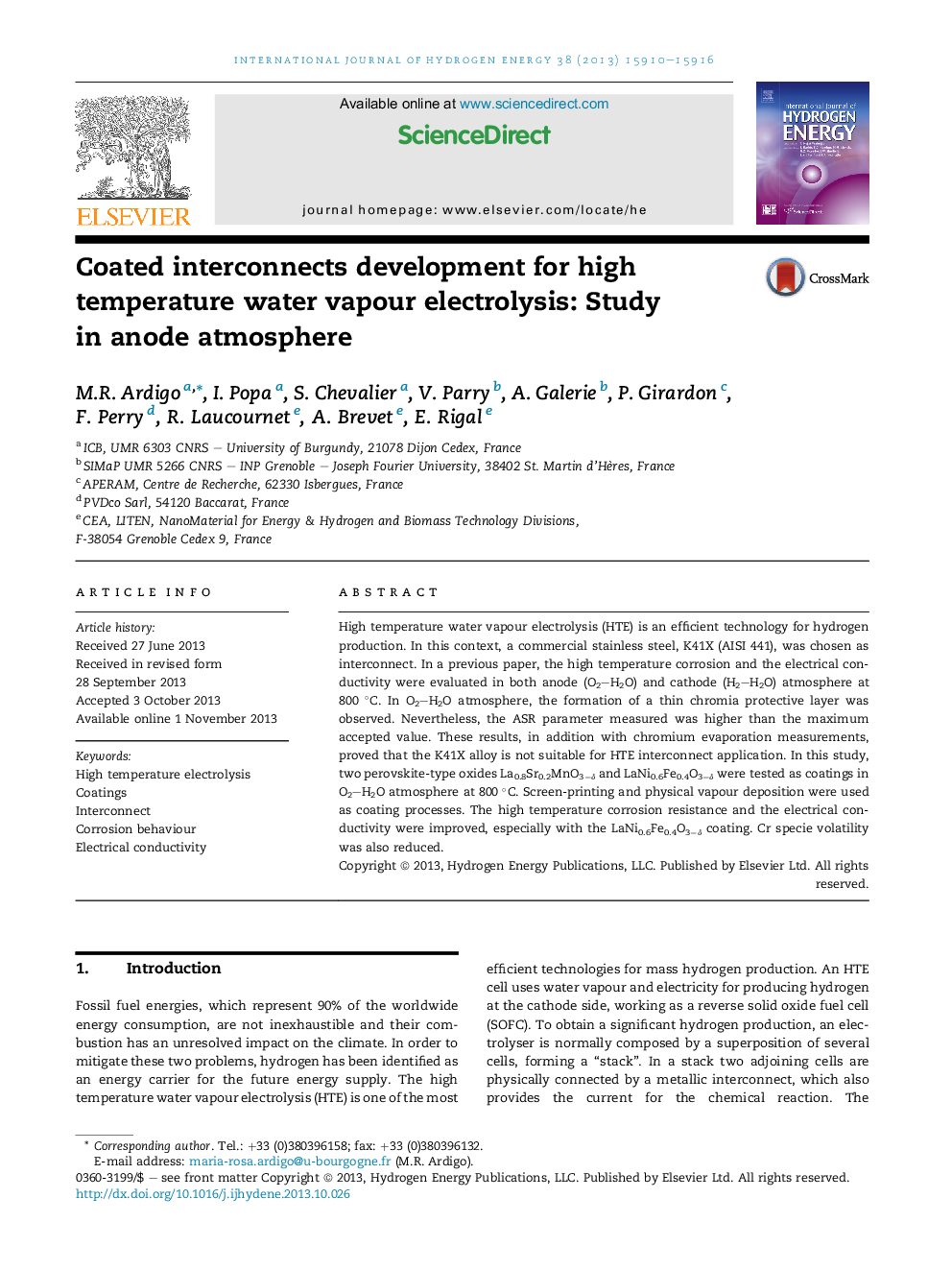| Article ID | Journal | Published Year | Pages | File Type |
|---|---|---|---|---|
| 1274150 | International Journal of Hydrogen Energy | 2013 | 7 Pages |
•La0.8Sr0.2MnO3−δ and LaNi0.6Fe0.4O3−δ, were tested as coatings.•Screen-printing and physical vapour deposition were used as coating processes.•Ageing tests and ASR measurements were performed at 800 °C in O2–H2O atmosphere.•Cr evaporation measurements were carried out at 800 °C in O2–H2O gas mixture.•General improvement with both coatings, especially with the LaNi0.6Fe0.4O3−δ.
High temperature water vapour electrolysis (HTE) is an efficient technology for hydrogen production. In this context, a commercial stainless steel, K41X (AISI 441), was chosen as interconnect. In a previous paper, the high temperature corrosion and the electrical conductivity were evaluated in both anode (O2–H2O) and cathode (H2–H2O) atmosphere at 800 °C. In O2–H2O atmosphere, the formation of a thin chromia protective layer was observed. Nevertheless, the ASR parameter measured was higher than the maximum accepted value. These results, in addition with chromium evaporation measurements, proved that the K41X alloy is not suitable for HTE interconnect application. In this study, two perovskite-type oxides La0.8Sr0.2MnO3−δ and LaNi0.6Fe0.4O3−δ were tested as coatings in O2–H2O atmosphere at 800 °C. Screen-printing and physical vapour deposition were used as coating processes. The high temperature corrosion resistance and the electrical conductivity were improved, especially with the LaNi0.6Fe0.4O3−δ coating. Cr specie volatility was also reduced.
